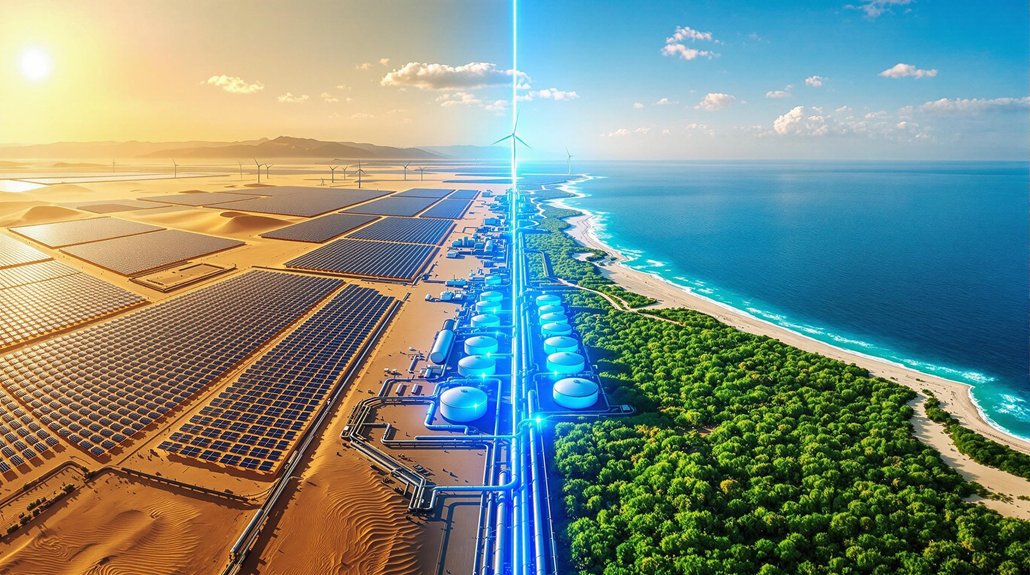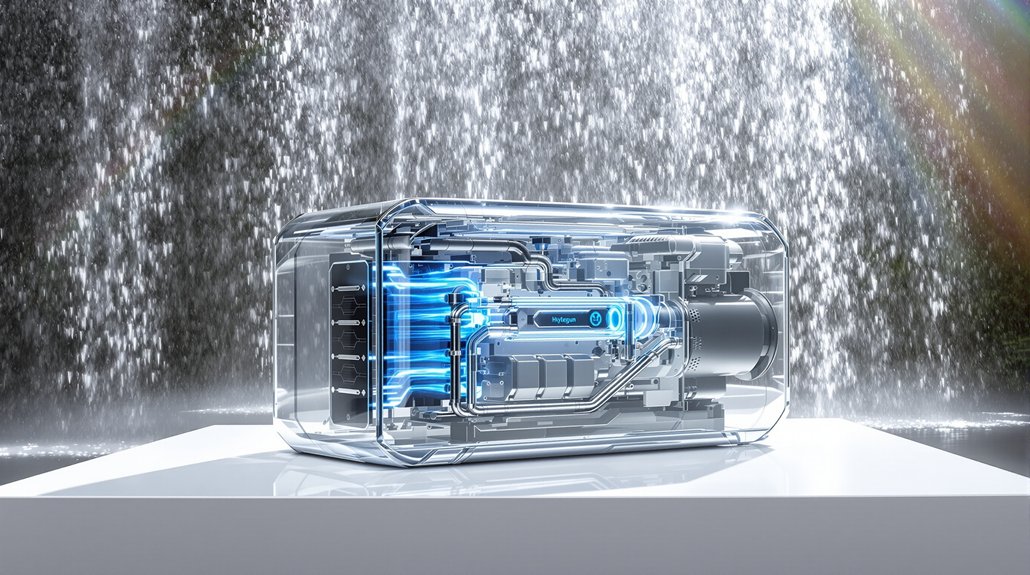India and Saudi Arabia are embracing cooperation, not competition, in hydrogen. These former energy rivals signed a major MoU, establishing a high-level task force to guide investments and technical exchanges. Saudi Arabia’s throwing $10 billion at green hydrogen projects while India builds public-private partnerships. Their strategies complement perfectly—Saudi Arabia targets exports, India focuses on domestic use. Both nations are dead serious about hydrogen’s potential. The real transformation? It’s just getting started.
While the rest of the world debates clean energy shifts, India and Saudi Arabia are actually doing something about it. They’ve signed a Memorandum of Understanding to collaborate on hydrogen production and technology. Not just talking points. Real action.
The partnership isn’t exactly new. These countries established their Strategic Partnership Council back in 2019, but now they’re doubling down on hydrogen. They’ve even created a high-level task force to guide investments and technical exchanges. Because nothing says “we’re serious” like creating another committee, right?
Saudi Arabia isn’t messing around with its hydrogen ambitions. Their National Hydrogen Strategy aims for 1.2 million tons of green hydrogen by 2030. That’s a cool 10% of the global market. India’s developing its own National Hydrogen Mission, focusing on making hydrogen at home and cutting costs. Both countries see hydrogen as their ticket to net-zero.
Money talks. Saudi’s Public Investment Fund has committed $10 billion to green hydrogen projects. Their NEOM project alone is worth $5 billion – the largest of its kind anywhere.
India’s taking a different route with public-private partnerships to build infrastructure. Smart move.
They’re not just producing the stuff; they’re advancing how it’s transported, stored, and converted. Both countries are exchanging technical expertise and researching cost-effective production methods. They’ve got the renewable resources – abundant sun and wind – especially in Saudi Arabia. Might as well use them. Unlike geothermal energy which offers high capacity factors, hydrogen production can be scaled virtually anywhere with sufficient renewable resources.
Saudi Arabia wants to export hydrogen to Europe and Asia. India’s looking inward, targeting domestic consumption in industry, transportation, and power. This collaboration aligns with discussions expected at the upcoming Hydrogen Arabia event in Riyadh that will gather global leaders and innovators in clean energy. Together, they’re trying to create global demand for clean hydrogen. This partnership exemplifies their broader commitment to enhanced energy infrastructure development as outlined in their bilateral cooperation agreement.
Climate commitment? Check. Both nations have reaffirmed their dedication to the Paris Agreement.
References
- https://solarquarter.com/2025/04/24/saudi-arabia-india-strengthen-ties-on-green-hydrogen-oil-stability-and-climate-cooperation/
- https://www.arabnews.com/node/2577785/world
- https://www.newswire.ca/news-releases/welcome-to-hydrogen-arabia-the-future-of-clean-energy-833784877.html
- https://energynews.biz/indias-ambitious-partnership-with-saudi-arabia-for-hydrogen/
- https://www.mepmiddleeast.com/business/saudi-arabia-india-renewable-energy-revolution








